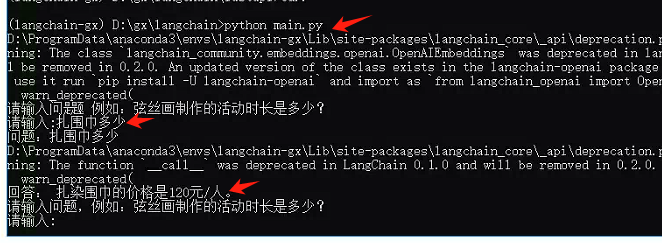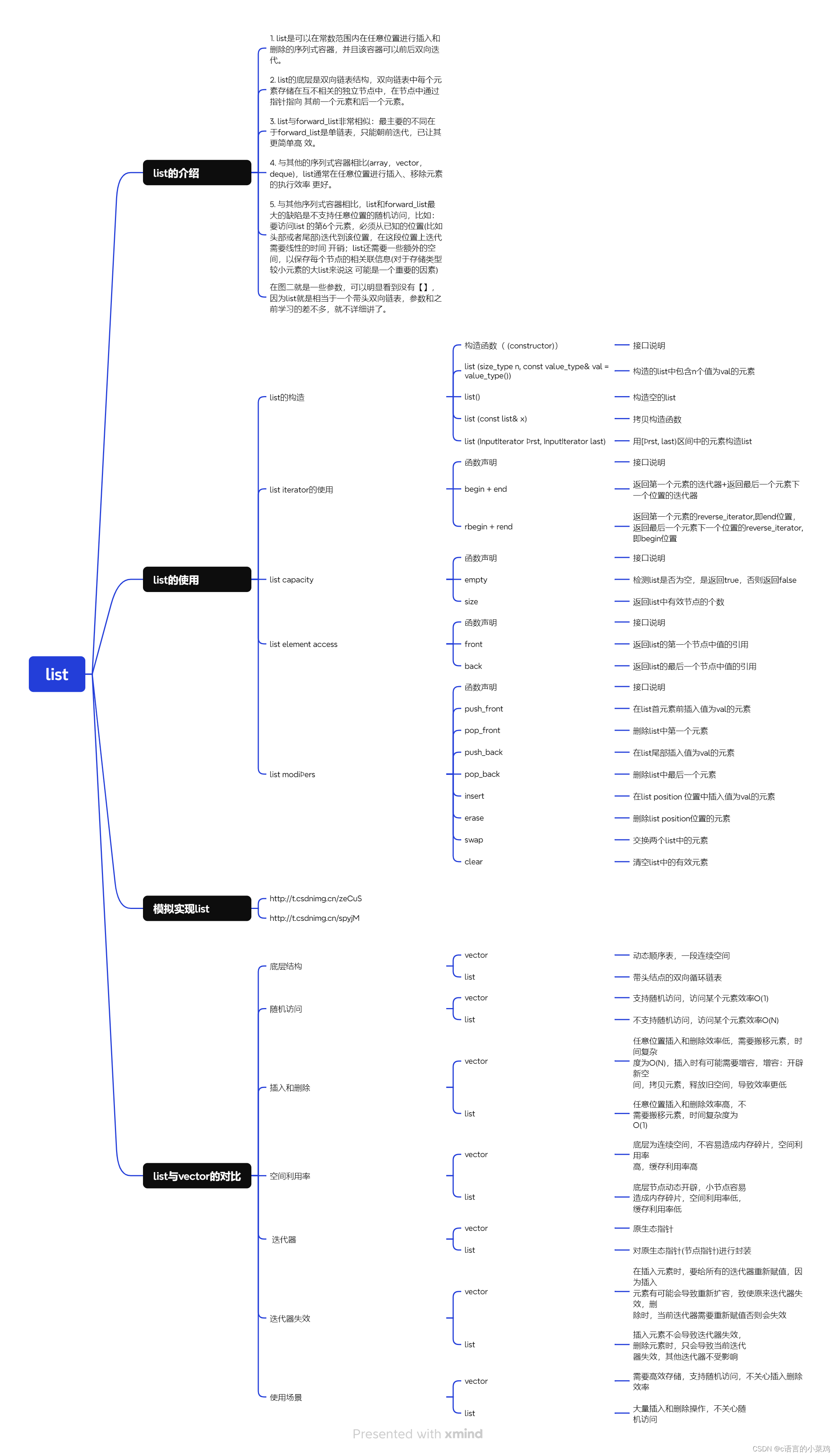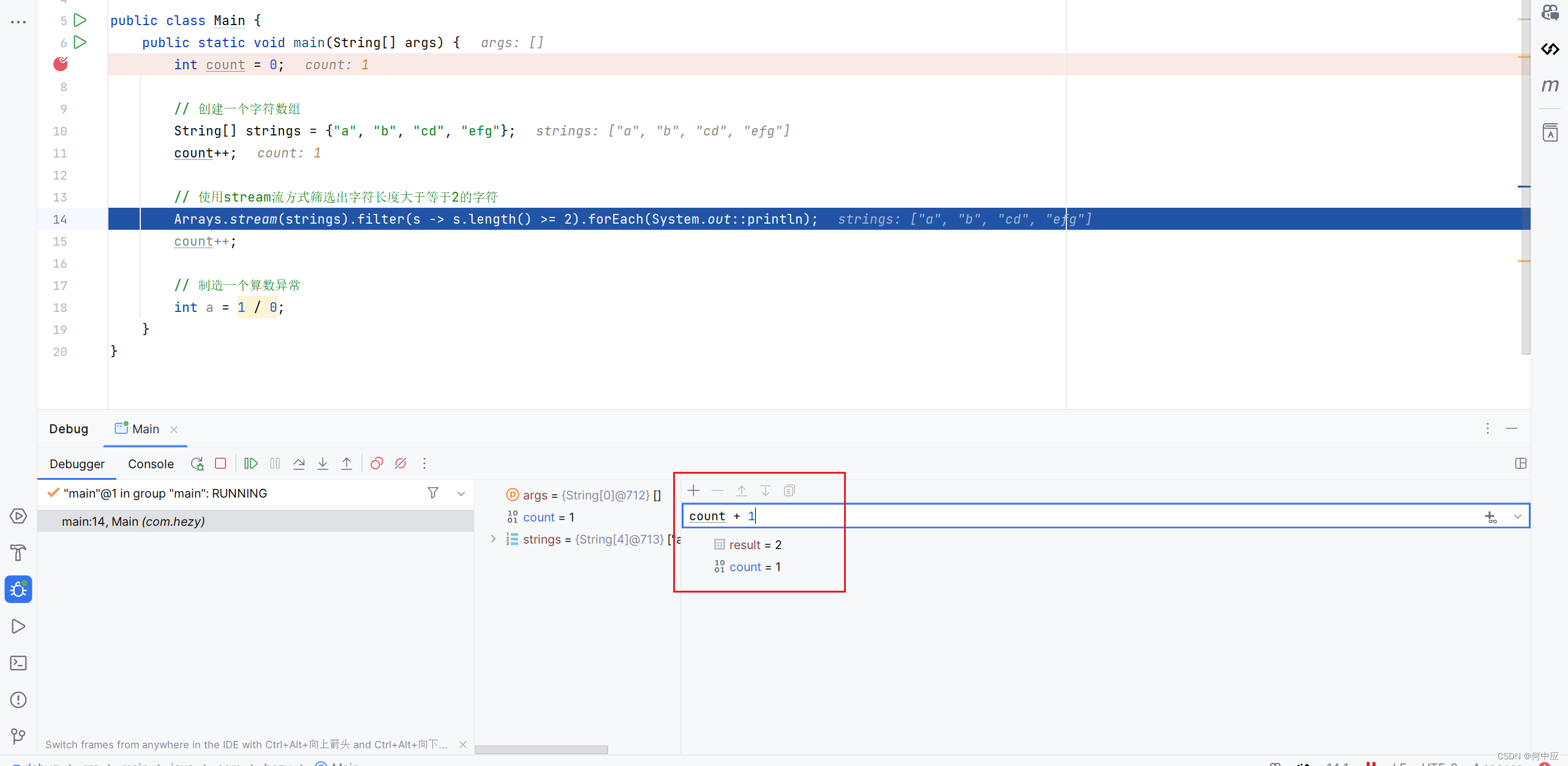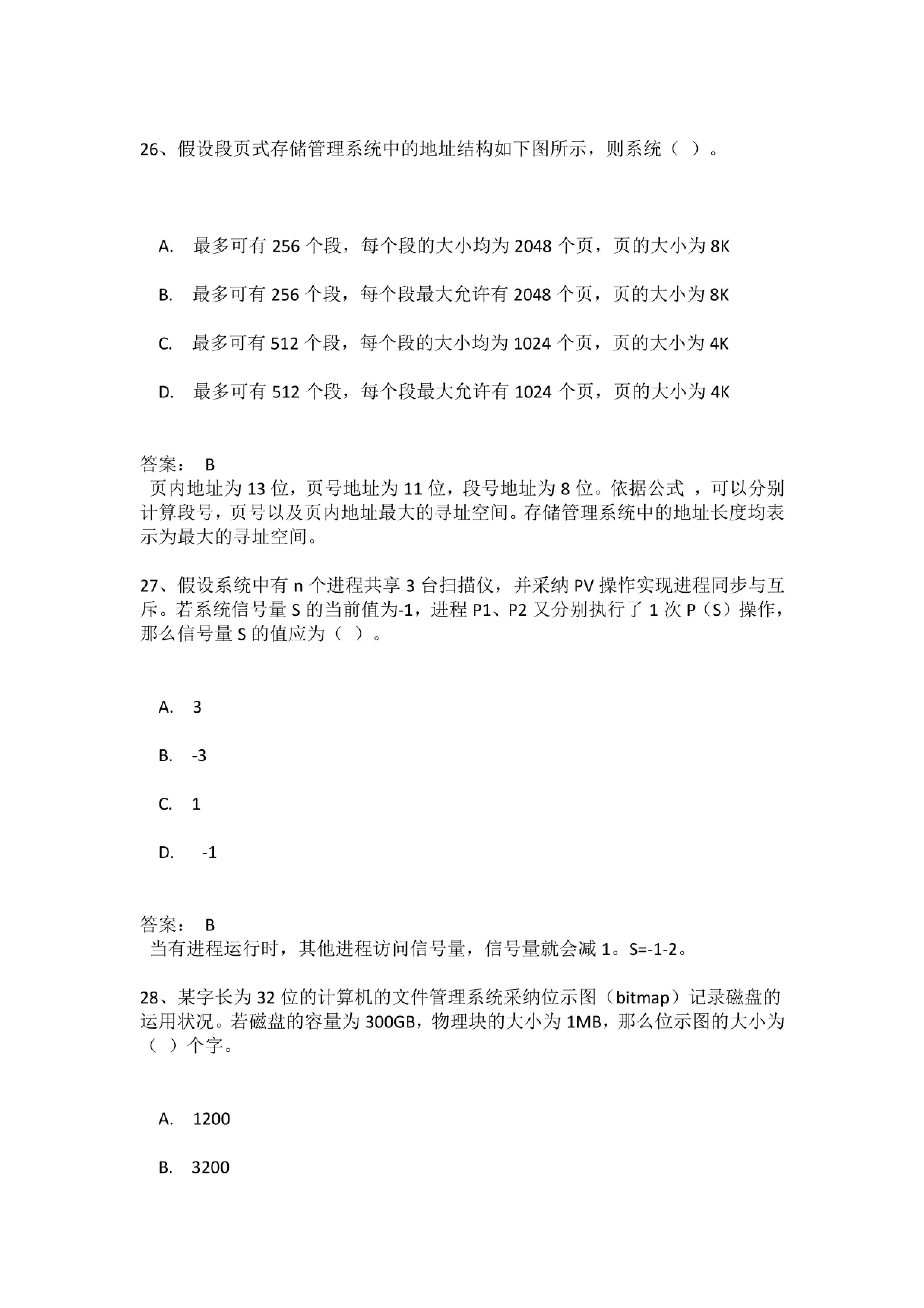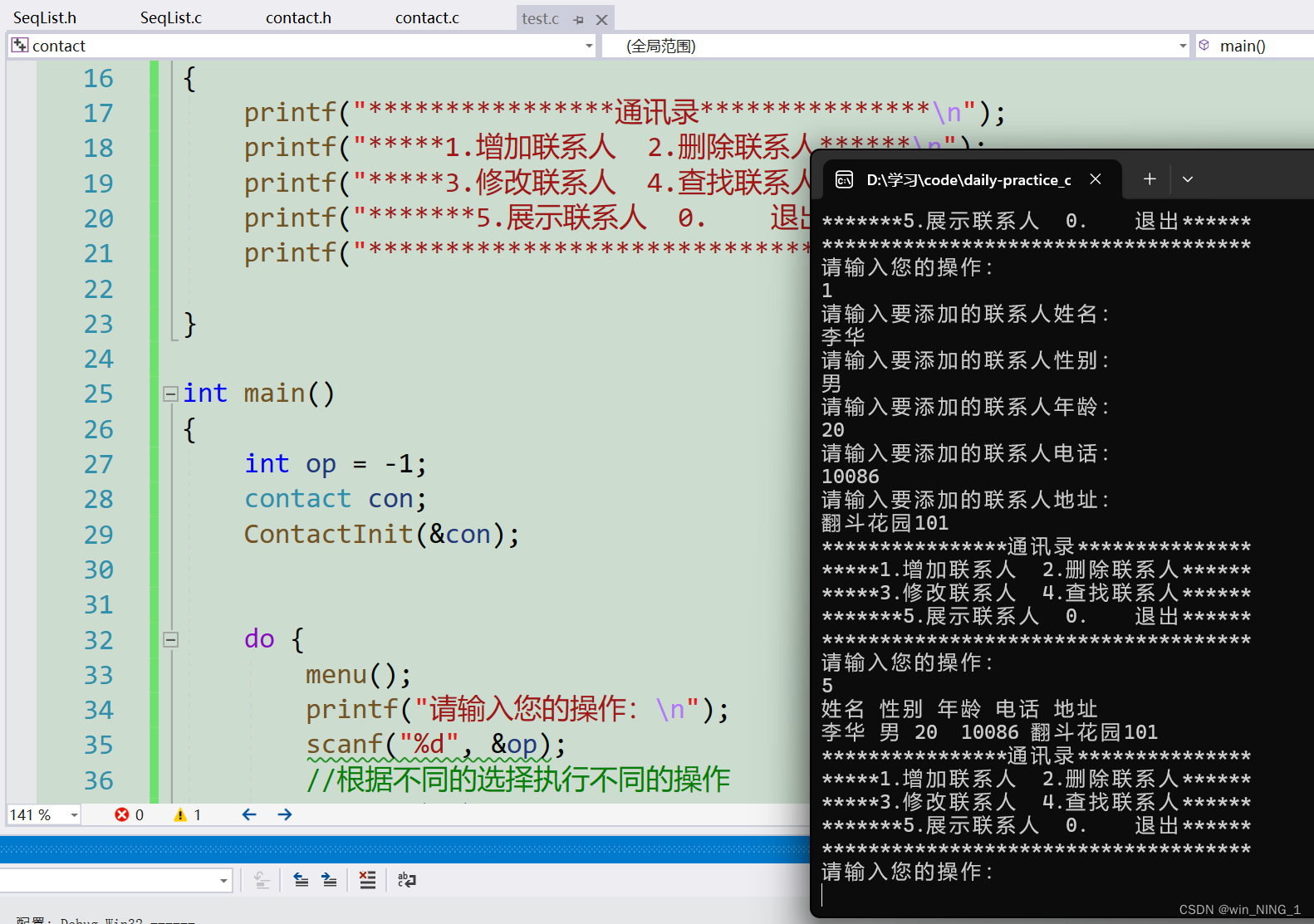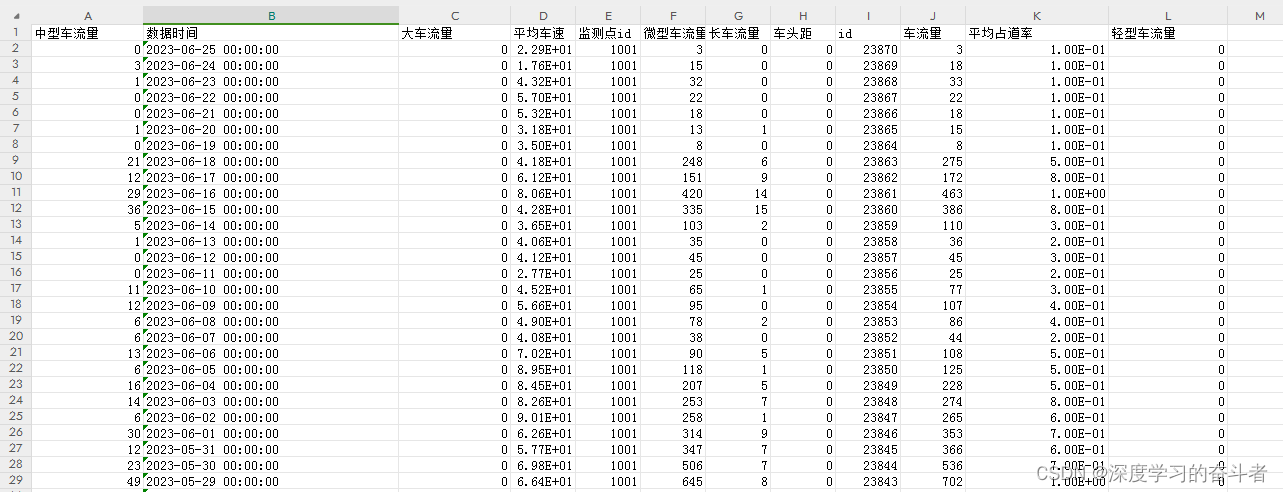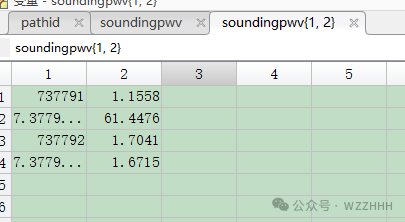在了解多态之前我们先弄清以下三个概念:
- 方法的重写
- 向上转型和向下转型
- 动态绑定和静态绑定
一.方法的重写
重写(override):也称为覆盖。重写是子类对父类非静态、非private修饰,非final修饰,非构造方法等的实现过程 进行重新编写, 返回值和形参都不能改变。即外壳不变,核心重写!重写的好处在于子类可以根据需要,定义特定 于自己的行为。 也就是说子类能够根据需要实现父类的方法。
class Animal {
public void eat() {
System.out.println("正在吃");
}
}
class Dog extends Animal {
@Override
public void eat() {
System.out.println("正在吃狗粮");
}
}
class Test {
public static void main(String[] args) {
Dog dog=new Dog();
dog.eat();
}
} 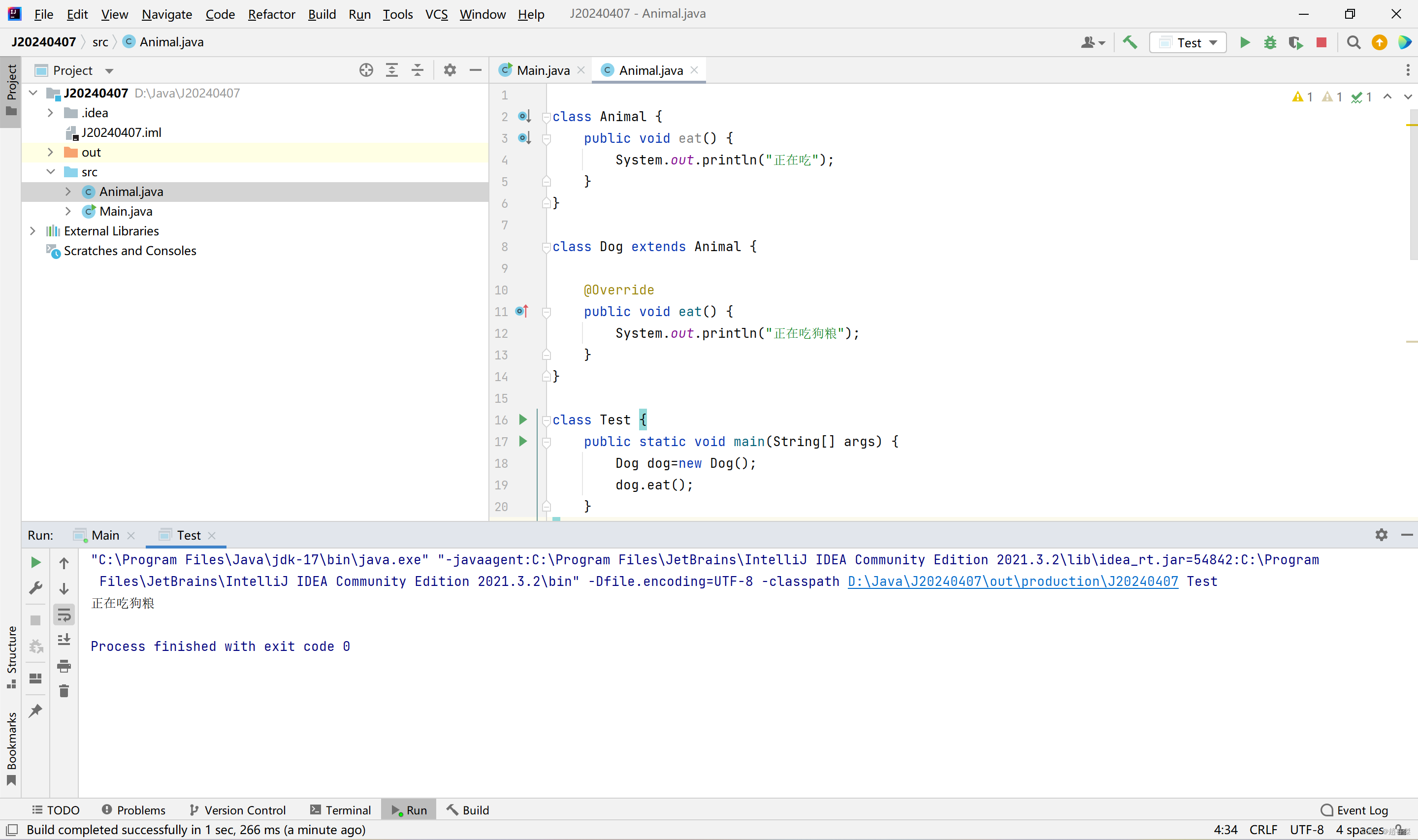
方法重写的规则:
- 子类在重写父类的方法时,一般必须与父类方法原型一致: 返回值类型 方法名 (参数列表) 要完全一致
- 被重写的方法返回值类型可以不同,但是必须是具有父子关系的
- 访问权限不能比父类中被重写的方法的访问权限更低。例如:如果父类方法被public修饰,则子类中重写该方 法就不能声明为 protected
- 父类被static、private修饰的方法、构造方法都不能被重写。
- 重写的方法, 可以使用 @Override 注解来显式指定. 有了这个注解能帮我们进行一些合法性校验. 例如不小心 将方法名字拼写错了 (比如写成 aet), 那么此时编译器就会发现父类中没有 aet 方法, 就会编译报错, 提示无法 构成重写.
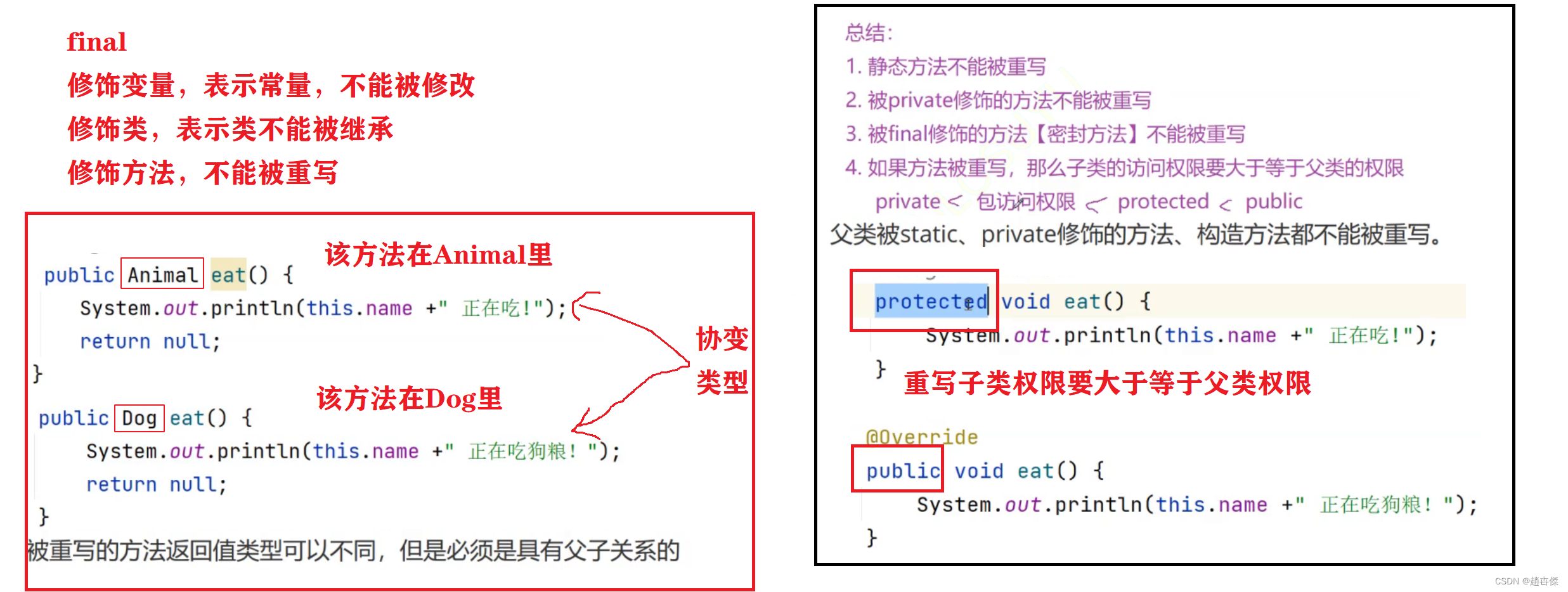
重写与重载的区别:

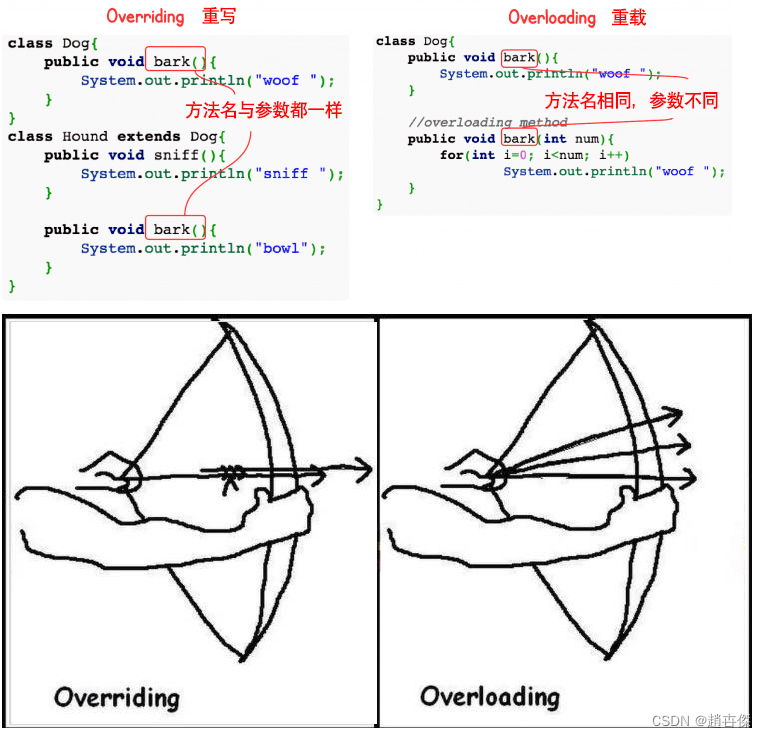
重写的设计原则:
对于已经投入使用的类,尽量不要进行修改。最好的方式是:重新定义一个新的类,来重复利用其中共性的内容, 并且添加或者改动新的内容。
例如:若干年前的手机,只能打电话,发短信,来电显示只能显示号码,而今天的手机在来电显示的时候,不仅仅 可以显示号码,还可以显示头像,地区等。在这个过程当中,我们不应该在原来老的类上进行修改,因为原来的 类,可能还在有用户使用,正确做法是:新建一个新手机的类,对来电显示这个方法重写就好了,这样就达到了我 们当今的需求了。

静态绑定:也称为前期绑定(早绑定),即在编译时,根据用户所传递实参类型就确定了具体调用那个方法。典型代 表函数重载。
动态绑定:也称为后期绑定(晚绑定),即在编译时,不能确定方法的行为,需要等到程序运行时,才能够确定具体 调用那个类的方法。
二.向上转移和向下转型
1.向上转型
向上转型:实际就是创建一个子类对象,将其当成父类对象来使用。
语法格式:父类类型 对象名 = new 子类类型()
Animal animal = new Cat("元宝",2);animal是父类类型,但可以引用一个子类对象,因为是从小范围向大范围的转换。
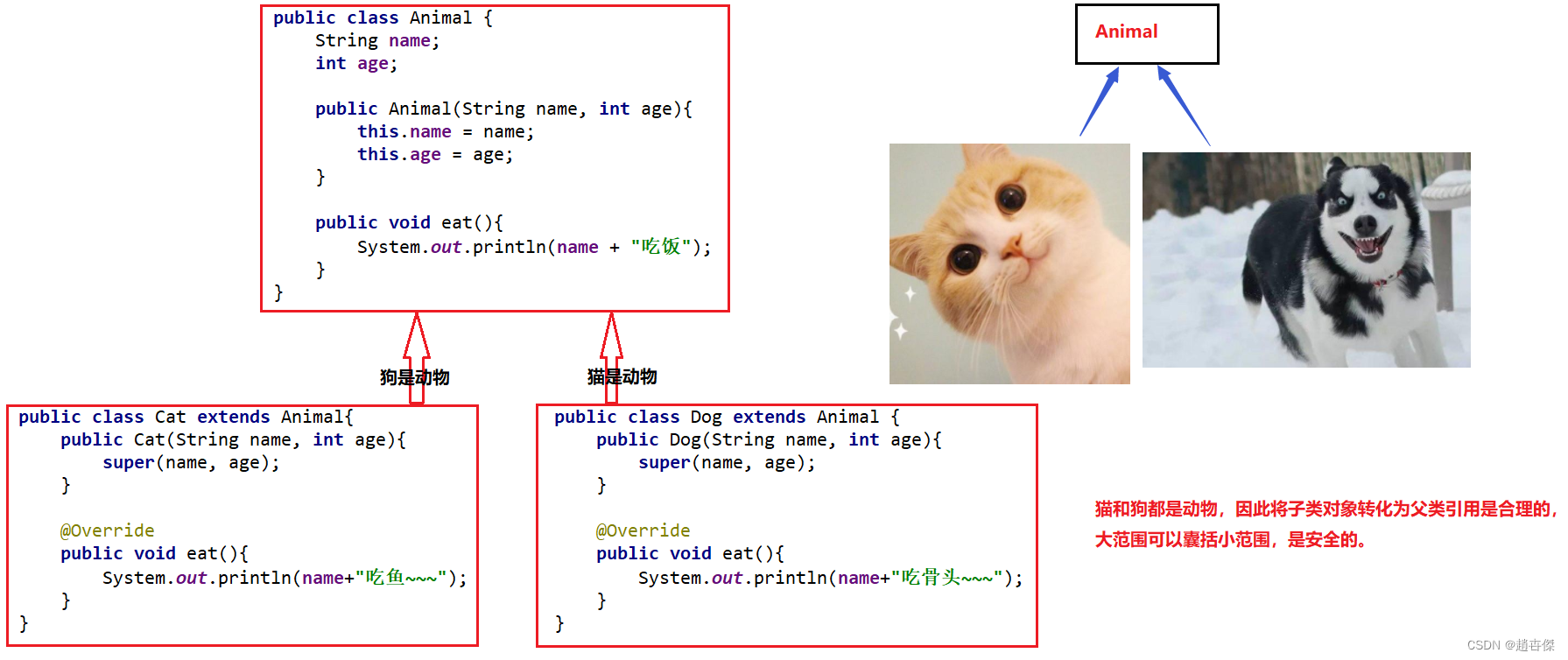
使用场景:
- 直接赋值
- 方法传参
- 方法返回
1.直接赋值
class Animal {
String name;
public void eat() {
System.out.println("正在吃");
}
public Animal(String name) {
this.name = name;
}
}
class Dog extends Animal {
public Dog(String name) {
super(name);
}
public void bark() {
System.out.println("正在汪汪叫");
}
@Override
public void eat() {
System.out.println(this.name + "正在吃狗粮");
}
}
class Test {
public static void main(String[] args) {
Animal animal=new Dog("小黑");
animal.eat();
}
}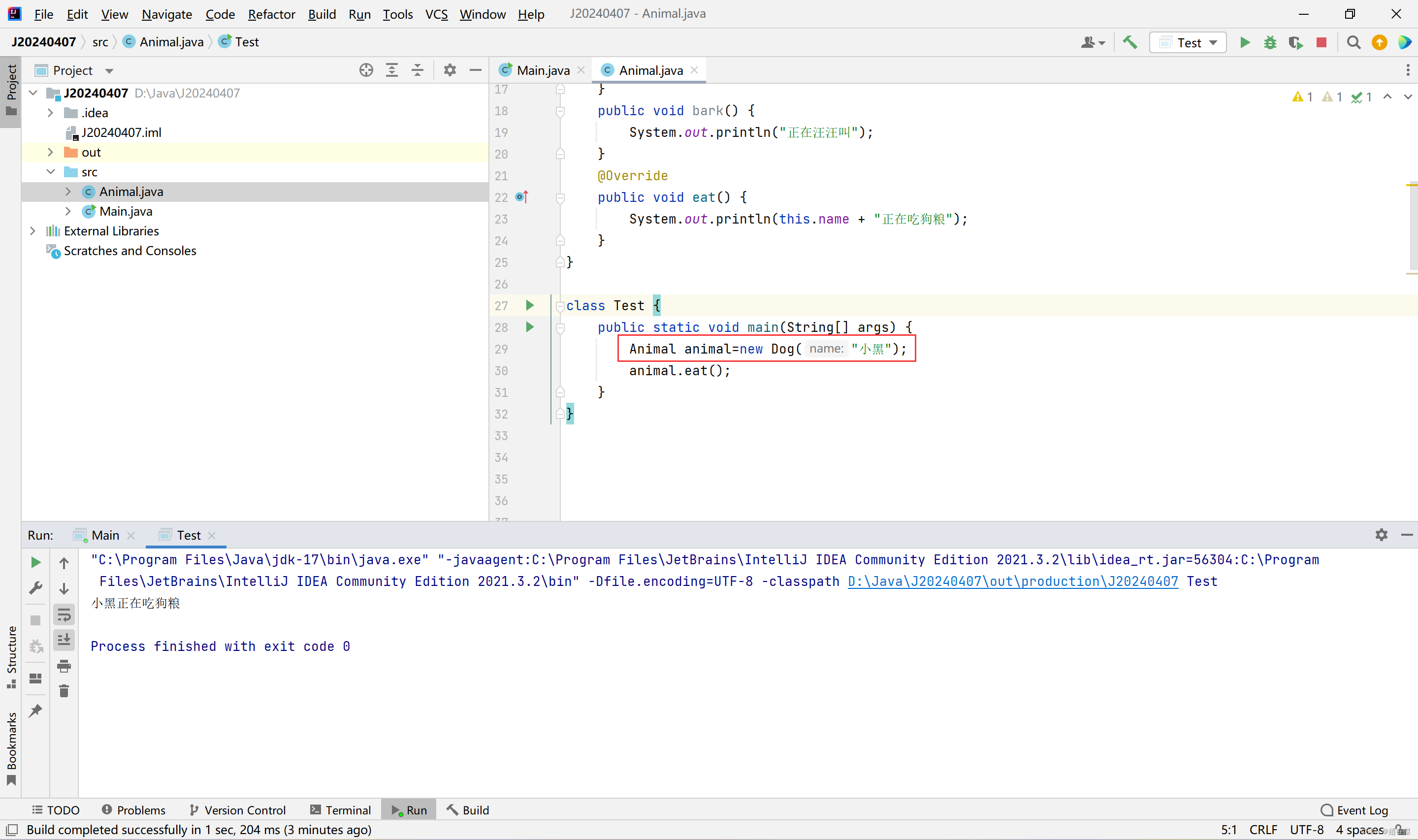
两种不同写法:
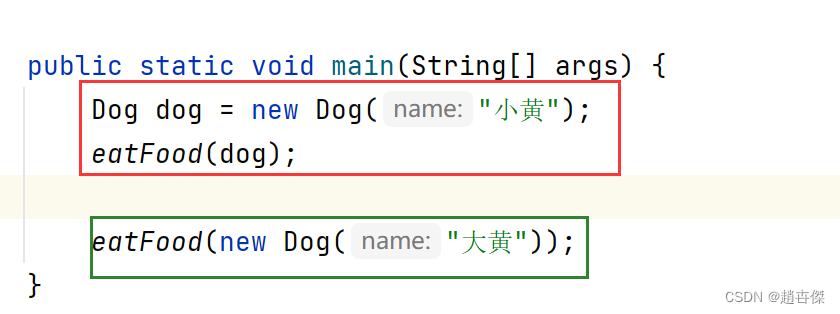
2.方法传参
class Animal {
String name;
public void eat() {
System.out.println("正在吃");
}
public Animal(String name) {
this.name = name;
}
}
class Dog extends Animal {
public Dog(String name) {
super(name);
}
public void bark() {
System.out.println("正在汪汪叫");
}
@Override
public void eat() {
System.out.println(this.name + "正在吃狗粮");
}
}
class Test {
public static void eatFood(Animal animal){
animal.eat();
}
public static void main(String[] args) {
eatFood(new Dog("大黄"));
}
}
3.方法返回
class Animal {
String name;
public void eat() {
System.out.println("正在吃");
}
public Animal(String name) {
this.name = name;
}
}
class Dog extends Animal {
public Dog(String name) {
super(name);
}
public void bark() {
System.out.println("正在汪汪叫");
}
@Override
public void eat() {
System.out.println(this.name + "正在吃狗粮");
}
}
class Test {
public static Animal buyAnimal(String var){
if("狗".equals(var) ){
return new Dog("狗狗");
}else{
return null;
}
}
public static void main(String[] args) {
Animal animal = buyAnimal("狗");
animal.eat();
}
}总结: 以 2 为例

向上转型的优点:让代码实现更简单灵活。
向上转型的缺陷:不能调用到子类特有的方法。
2.向下转型
将一个子类对象经过向上转型之后当成父类方法使用,再无法调用子类的方法。
但有时候可能需要调用 子类特有的方法 。
此时:将父类引用再还原为子类对象即可,即向下转换。
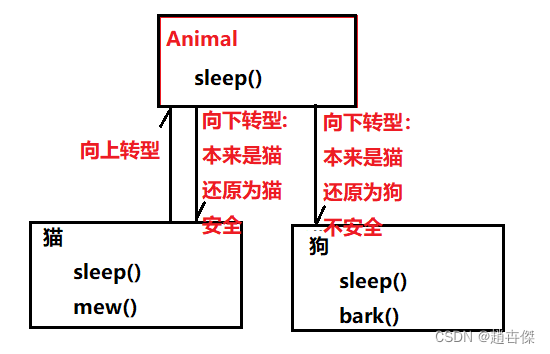
class Animal {
String name;
int age;
public Animal (String name,int age) {
this.name=name;
this.age=age;
}
public void eat() {
System.out.println(name+"吃饭");
}
}
class Cat extends Animal {
public Cat(String name, int age) {
super(name, age);
}
@Override
public void eat() {
System.out.println(super.name+"吃鱼~~~~~");
}
}
class Dog extends Animal {
public Dog(String name, int age) {
super(name, age);
}
@Override
public void eat() {
System.out.println(super.name+"吃骨头~~~~");
}
}
class TestAnimal {
public static void main(String[] args) {
Cat cat = new Cat("猫",2);
Dog dog = new Dog("狗", 1);
// 向上转型
Animal animal = cat;
animal.eat();
animal = dog;
animal.eat();
// 编译失败,编译时编译器将animal当成Animal对象处理
// 而Animal类中没有bark方法,因此编译失败
//animal.bark();
// 向上转型
// 程序可以通过编程,但运行时抛出异常---因为:animal实际指向的是狗
// 现在要强制还原为猫,无法正常还原,运行时抛出:ClassCastException
cat = (Cat)animal;
cat.eat();
// animal本来指向的就是狗,因此将animal还原为狗也是安全的
dog = (Dog)animal;
dog.eat();
}
}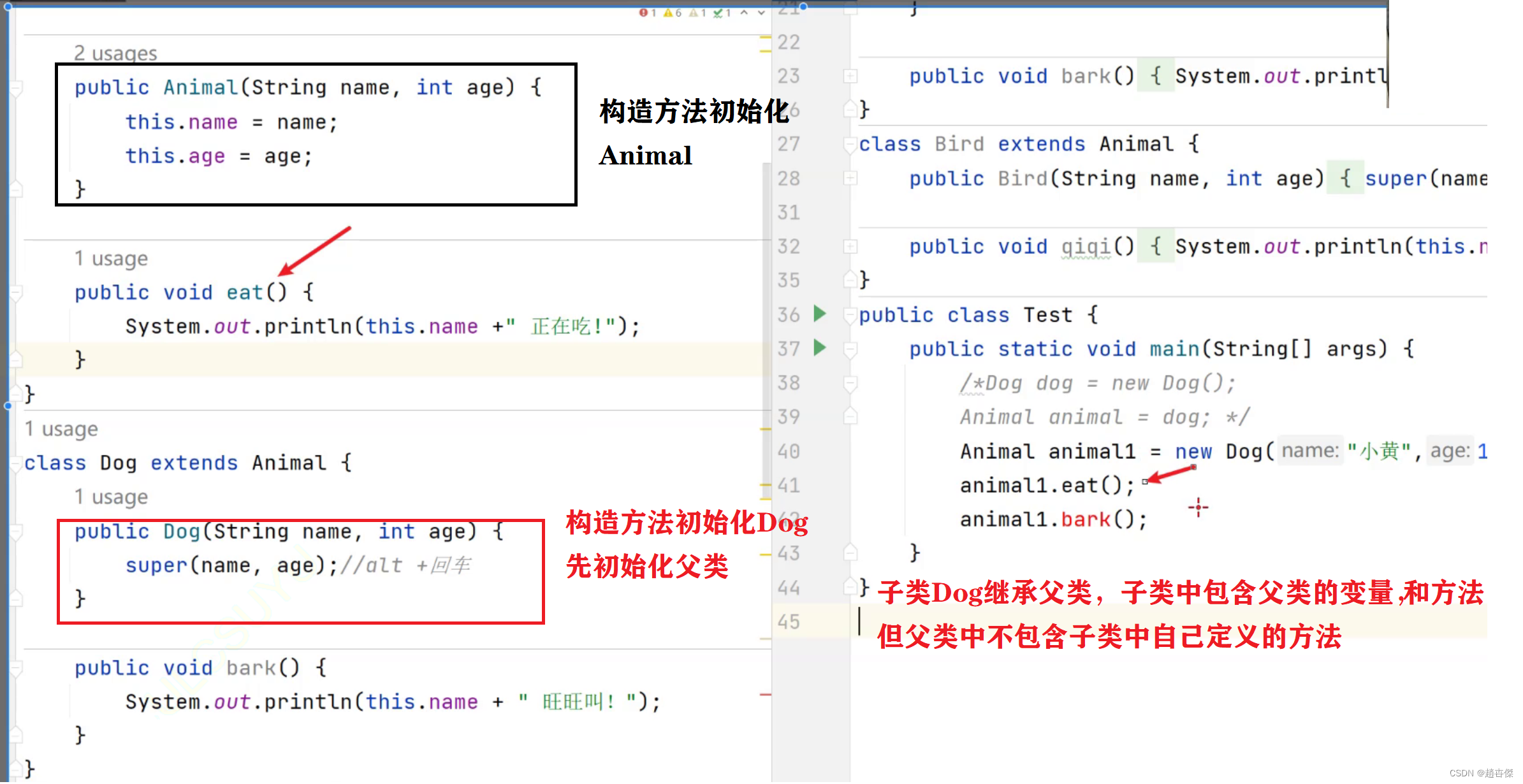

正确做法 :

所以 向下转型用的比较少,而且不安全,万一转换失败,运行时就会抛异常。
Java中为了提高向下转型的安全性
引入了instanceof ,如果该表达式为true,则可以安全转换。
class Animal {
String name;
int age;
public Animal (String name,int age) {
this.name=name;
this.age=age;
}
public void eat() {
System.out.println(name+"吃饭");
}
}
class Cat extends Animal {
public Cat(String name, int age) {
super(name, age);
}
@Override
public void eat() {
System.out.println(super.name+"吃鱼~~~~~");
}
public void mew() {
System.out.println(super.name+"正在mew~~~~");
}
}
class Dog extends Animal {
public Dog(String name, int age) {
super(name, age);
}
@Override
public void eat() {
System.out.println(super.name+"吃骨头~~~~");
}
public void bark() {
System.out.println(super.name+"正在汪汪叫~~~~");
}
}
class TestAnimal {
public static void main(String[] args) {
Cat cat = new Cat("猫",2);
Dog dog = new Dog("狗", 1);
// 向上转型
Animal animal = cat;
animal.eat();
animal = dog;
animal.eat();
if(animal instanceof Cat){
cat = (Cat)animal;
cat.mew();
}
if(animal instanceof Dog){
dog = (Dog)animal;
dog.bark();
}
}
} 
三.动态绑定与静态绑定
1.动态绑定
动态绑定:也称为 后期绑定(晚绑定)

即在编译时,不能确定 方法的行为 ,需要等到 程序运行 时,才能够确定具体调用那个 类的方法 。
2.静态绑定
静态绑定:也称为 前期绑定(早绑定)
class Test {
public static int sum(int x,int y) {
return x+y;
}
public static double sum (double x,double y,double z) {
return x+y+z;
}
public static void main(String[] args) {
System.out.println(sum(2, 6));
System.out.println(sum(1.2, 3.5, 9.3));
}
}
即在编译时,根据用户所传递实参类型就确定了具体 调用 那个方法。
典型代表函数重载。

四.多态
1.多态的概念
通俗来说,就是多种形态,具体点就是去完成某个行为,当不同的对象去完成时会产生出不同的状态。

总的来说:同一件事情,发生在不同对象身上,就会产生不同的结果。
2.多态的实现条件
在java中要实现多态,必须要满足如下几个条件,缺一不可:
- 必须在继承体系下
- 子类必须要对父类中方法进行重写
- 通过父类的引用调用重写的方法
多态体现:在代码运行时 ,当传递不同类对象时 ,会调用对应类中的方法 。
class Animal {
String name;
int age;
public Animal (String name,int age) {
this.name=name;
this.age=age;
}
public void eat() {
System.out.println(name+"吃饭");
}
}
class Cat extends Animal {
public Cat(String name, int age) {
super(name, age);
}
@Override
public void eat() {
System.out.println(super.name+"吃鱼~~~~~");
}
public void mew() {
System.out.println(super.name+"正在mew~~~~");
}
}
class Dog extends Animal {
public Dog(String name, int age) {
super(name, age);
}
@Override
public void eat() {
System.out.println(super.name+"吃骨头~~~~");
}
public void bark() {
System.out.println(super.name+"正在bark~~~~");
}
}
///分割线//
class TestAnimal {
// 编译器在编译代码时,并不知道要调用Dog 还是 Cat 中eat的方法
// 等程序运行起来后,形参a引用的具体对象确定后,才知道调用那个方法
// 注意:此处的形参类型必须时父类类型才可以
public static void eat(Animal a){
a.eat();
}
public static void main(String[] args) {
Cat cat = new Cat("元宝", 2);
Dog dog = new Dog("小七", 1);
eat(cat);
eat(dog);
}
}
在上述代码中, 分割线上方的代码是 类的实现者 编写的, 分割线下方的代码是 类的调用者 编写的.
当类的调用者在编写 eat 这个方法的时候, 参数类型为 Animal (父类)
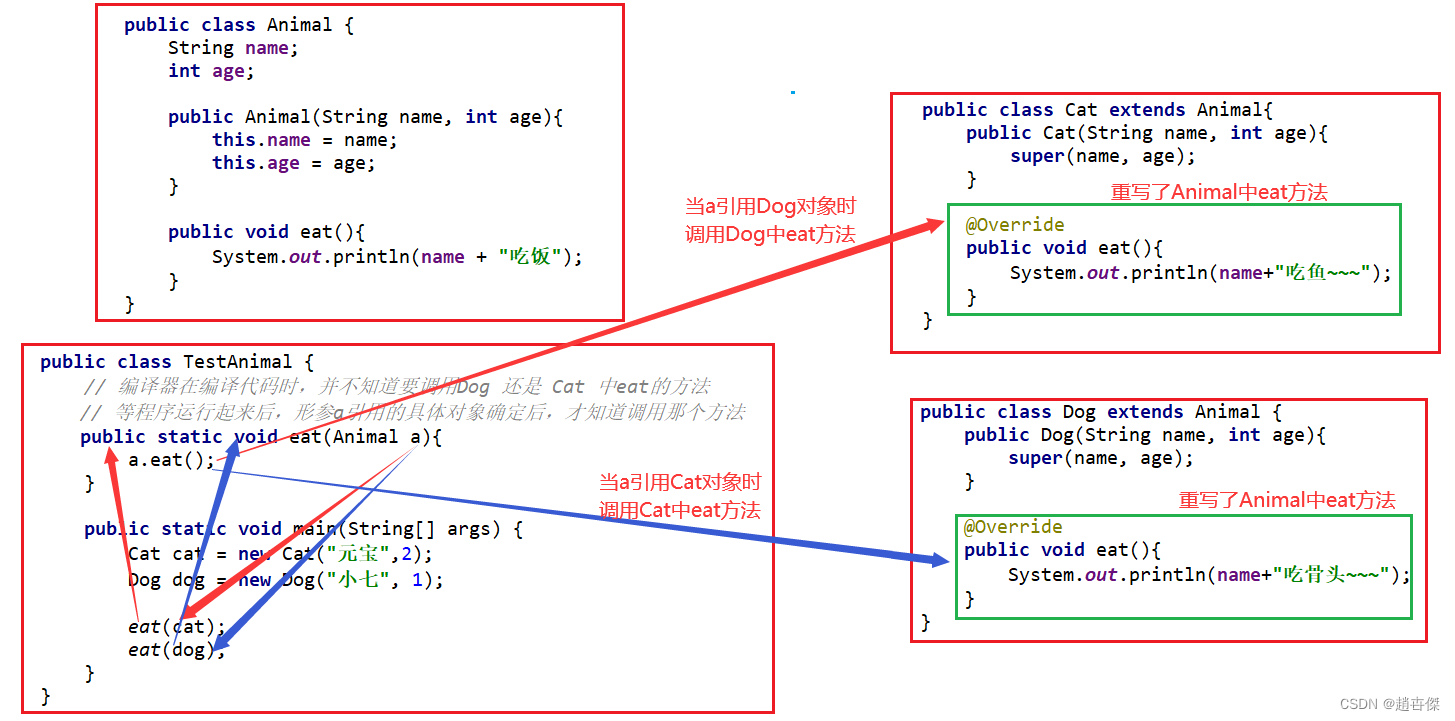
当类的调用者在编写 eat 这个方法的时候, 参数类型为 Animal (父类), 此时在该方法内部并不知道, 也不关注当前的 a 引用指向的是哪个类型(哪个子类)的实例. 此时 a这个引用调用 eat方法可能会有多种不同的表现(和 a 引用的实例 相关), 这种行为就称为 多态.
3.多态的优缺点
1. 圈复杂度低
普通写法
class Shape {
//属性....
public void draw() {
System.out.println("画图形!");
}
}
class Rect extends Shape{
@Override
public void draw() {
System.out.println("♦");
}
}
class Cycle extends Shape{
@Override
public void draw() {
System.out.println("●");
}
}
class Flower extends Shape{
@Override
public void draw() {
System.out.println("❀");
}
}
class Test {
public static void drawShapes() {
Rect rect = new Rect();
Cycle cycle = new Cycle();
Flower flower = new Flower();
String[] shapes = {"cycle", "rect", "cycle", "rect", "flower"};
for (String shape : shapes) {
if (shape.equals("cycle")) {
cycle.draw();
} else if (shape.equals("rect")) {
rect.draw();
} else if (shape.equals("flower")) {
flower.draw();
}
}
}
public static void main(String[] args) {
drawShapes();
}
}
多态写法
class Shape {
//属性....
public void draw() {
System.out.println("画图形!");
}
}
class Rect extends Shape{
@Override
public void draw() {
System.out.println("♦");
}
}
class Cycle extends Shape{
@Override
public void draw() {
System.out.println("●");
}
}
class Flower extends Shape{
@Override
public void draw() {
System.out.println("❀");
}
}
class Test {
public static void drawShapes() {
// 我们创建了一个 Shape 对象的数组.
Shape[] shapes = {new Cycle(), new Rect(), new Cycle(),
new Rect(), new Flower()};
for (Shape shape : shapes) {
shape.draw();
}
}
public static void main(String[] args) {
drawShapes();
}
}
2. 可扩展能力强
如果要新增一种新的形状, 使用多态的方式代码改动成本也比较低.
class Triangle extends Shape {
@Override
public void draw() {
System.out.println("△");
}
}
对于类的调用者来说**(drawShapes方法),** 只要创建一个新类的实例就可以了, 改动成本很低.
而对于不用多态的情况, 就要把 drawShapes 中的 if - else 进行一定的修改, 改动成本更高.
3. 多态的缺陷
1.属性没有多态性
当父类和子类都有同名属性的时候,通过父类引用,只能引用父类自己的成员属性
2.构造方法没有多态性
4. 避免在构造方法中调用重写方法
class B {
public B() {
// do nothing
func();
}
public void func() {
System.out.println("B.func()");
}
}
class D extends B {
private int num = 1;
@Override
public void func() {
System.out.println("D.func() " + num);
}
}
class Test {
public static void main(String[] args) {
D d = new D();
}
}
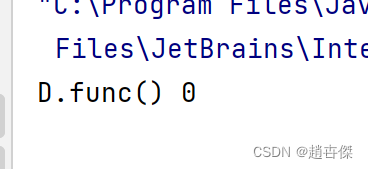
- 构造 D 对象的同时, 会调用 B 的构造方法.
- B 的构造方法中调用了 func 方法, 此时会触发动态绑定, 会调用到 D 中的 func
- 此时 D 对象自身还没有构造, 此时 num 处在未初始化的状态, 值为 0. 如果具备多态性,num的值应该是1.
- 所以在构造函数内,尽量避免使用实例方法,除了final和private方法。
